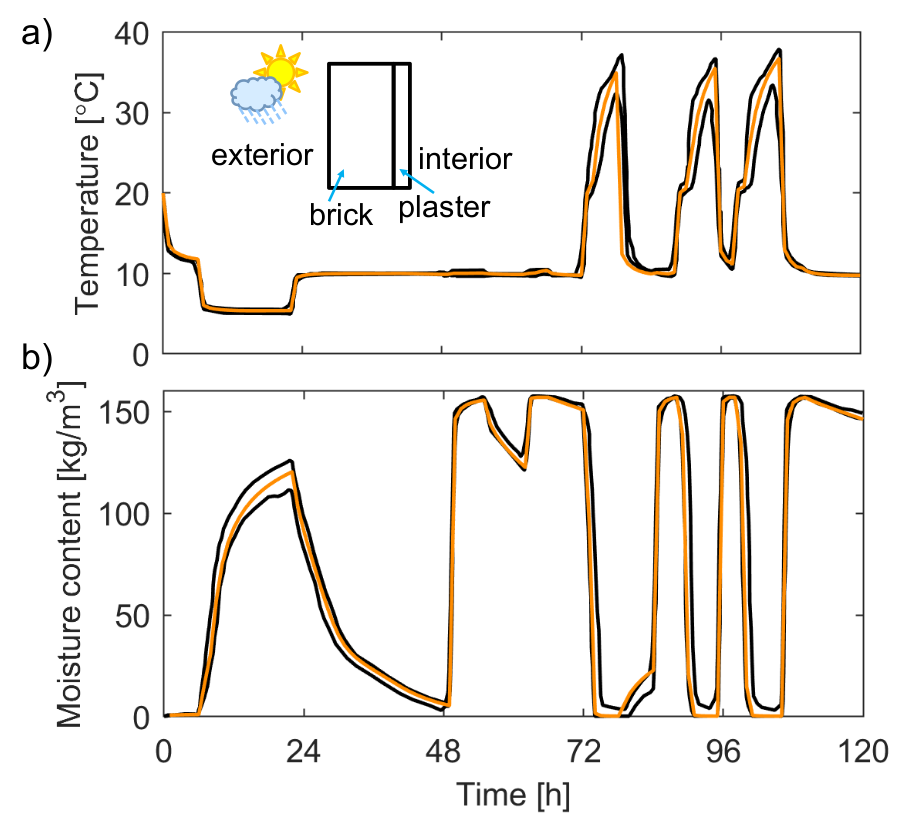hamFOAM
Coupled Heat and Moisture transport solver for OpenFOAM v6
Solver code and documentation Click Here
Tutorials Click Here
Tutorial case
hamFoam has been verified against HAMSTAD benchmark cases. Tutorial case features the HAMSTAD benchmark case 4: response analysis*, where a facade composed of brick and plaster is submitted to subsequent relative humidity, heat and moisture loads at the inner and outer surfaces.
*Hagentoft, C-E. (2002). HAMSTAD – Final report: Methodology of HAM-modeling, Report R-02:8. Gothenburg, Department of Building Physics, Chalmers University of Technology.

Relevant papers are kindly requested to be cited in case the solver is used:
Ferrari A, Kubilay A, Derome D, Carmeliet J. (2019). The use of permeable and reflective pavements as a potential strategy for urban heat island mitigation. Urban Climate; In press.
Kubilay A, Derome D, Carmeliet J. (2019). Impact of evaporative cooling due to wetting of urban materials on local thermal comfort in a street canyon. Sustainable Cities and Society; 49:101574. external page doi:10.1016/j.scs.2019.101574
Kubilay A, Derome D, Carmeliet J. (2018). Coupling of physical phenomena in urban microclimate: A model integrating air flow, wind-driven rain, radiation and transport in building materials. Urban Climate; 24:398–418. external page doi:10.1016/j.uclim.2017.04.012